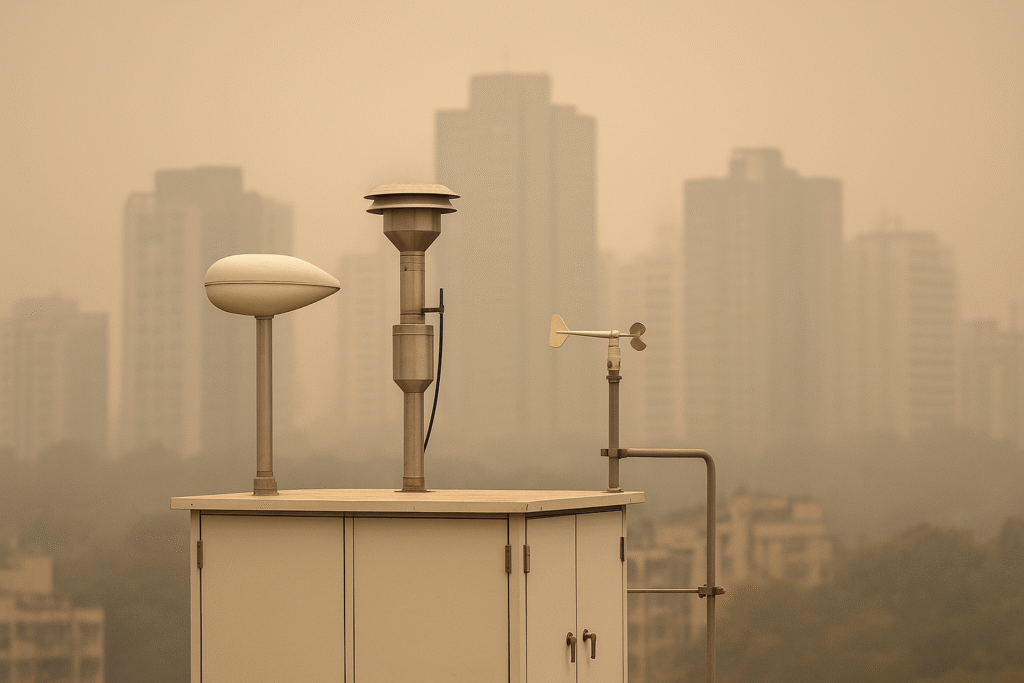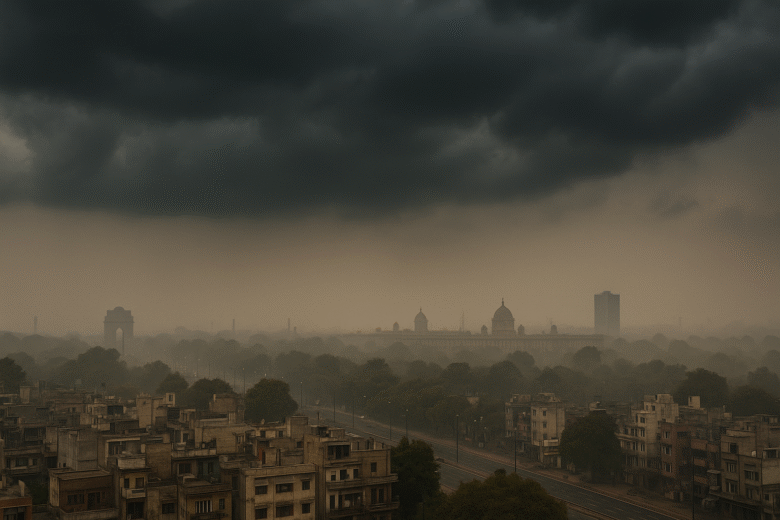Fun fact: In some cloud seeding experiments in India, scientists observed rainfall increases of nearly 46% under the right conditions.
Delhi is no stranger to environmental crises. Smog thick enough to sting your eyes, taps running dry, groundwater vanishing into oblivion, and every winter a blanket of toxic haze that makes the World Health Organization’s safety limits look laughable.
This year, the Delhi government is preparing something bold: Artificial Rain Trials. The hope is that cloud seeding—forcing clouds to shed rain—will tackle both air pollution and water scarcity. But the question remains: is this science-based salvation, or a desperate gamble dressed up as innovation?
What is Cloud Seeding?
Cloud seeding is a form of weather modification. Special substances like silver iodide or salts are released into clouds (by aircraft or ground-based generators) to encourage water droplets to condense and fall as rain.
The Delhi trials will use modified Cessna aircraft to release these particles over zones like Bawana, Rohini, and Alipur. Each sortie will last about 90 minutes, covering around 100 square kilometres. The project involves the India Meteorological Department, IIT Kanpur, and the Indian Institute of Tropical Meteorology, Pune. The cost? About ₹3.21 crore for five trials.
Why Delhi Wants Artificial Rain
To Clear the Air
Delhi’s winters are infamous for suffocating smog. Rain can wash away airborne pollutants and settle particulate matter. Officials hope artificial rain can offer short-term relief during peak pollution months.
To Recharge Water Sources
With depleting groundwater and erratic rainfall, Delhi faces chronic water stress. If artificial rain works, it could help replenish reservoirs and underground aquifers—provided water harvesting infrastructure is ready to capture it.
What Science Says
India has already conducted cloud seeding experiments through the CAIPEEX project (Cloud Aerosol Interaction and Precipitation Enhancement Experiment). In trials over Solapur, Maharashtra, rainfall was enhanced by 18–46% in favourable conditions.
Globally, cloud seeding has been used in the U.S. for snowpack and drought relief, and in China to clear skies before high-profile events. However, results are mixed. Many studies suggest increases of just 0–20% in precipitation—and only when conditions are perfect.

The Limitations
Dependent on Clouds: No clouds, no rain. Trying to seed Delhi’s dry winter skies is like squeezing water from a stone.
Temporary Fix: Even if the rain clears the smog, fresh pollutants from vehicles, factories, and stubble burning will return within days.
Environmental Risks: Chemicals like silver iodide are generally considered safe in small amounts, but their long-term effects in dense cities like Delhi are uncertain.
Cost vs. Impact: Spending crores on unpredictable rain begs the question: would the money be better spent on reducing emissions at the source?
Global and Local Lessons
In Maharashtra: The CAIPEEX trials showed real potential, but only under humid, cloud-rich conditions.
In the U.S.: Some states use cloud seeding to enhance snowpack for water supply.
In China: Authorities have used it to reduce smog temporarily before events like the 2008 Beijing Olympics.
For Delhi, scientists estimate about a 60–70% chance of success in the monsoon and post-monsoon periods. In winter, odds shrink drastically.
The Big Question: Will It Help Delhi?
Here’s the uncomfortable truth: artificial rain could give us a brief sigh of relief, but it won’t solve the root of the problem.
Yes, it may bring down PM2.5 levels for a few days. Yes, it could help recharge parched water bodies if paired with proper harvesting systems. But without structural changes—curbing vehicle emissions, reducing stubble burning, cleaning industrial output—artificial rain is more of a spectacle than a solution.
Conclusion
So, Can Cloud Seeding Really Fix Delhi’s Pollution & Water Crisis? The honest answer: not on its own.
It can buy time, lower the pollution burden for a few days, and perhaps offer a symbolic victory. But unless Delhi couples this experiment with long-term policies—cleaner fuels, stricter regulation, better public transport, and robust rainwater harvesting—it risks being remembered as another expensive gimmick.
Author’s Note
I wrote this with cautious optimism. Delhi needs solutions, fast. But cloud seeding is no silver bullet—it’s more of a temporary umbrella. Let’s not be blinded by the spectacle of artificial rain. Instead, let’s push for real, grounded change.
G.C., Ecosociosphere contributor.
References and Further Reading
- What Is Cloud Seeding And Why Delhi Plans To Do It (NDTV)
- Delhi Plans Cloud Seeding Trial in July (Times of India)
- CAIPEEX – Indian Cloud Seeding Scientific Experiment (IITM Pune)
- CAIPEEX Research Paper on Cloud Seeding (ResearchGate)
- Artificial Rain: Cloud Seeding Explained (IAS Gyan)
- GAO Report on Weather Modification & Cloud Seeding (U.S. Government Accountability Office)





Comments
Aw, this was a really nice post. In idea I wish to put in writing like this additionally – taking time and actual effort to make an excellent article… but what can I say… I procrastinate alot and certainly not appear to get something done.